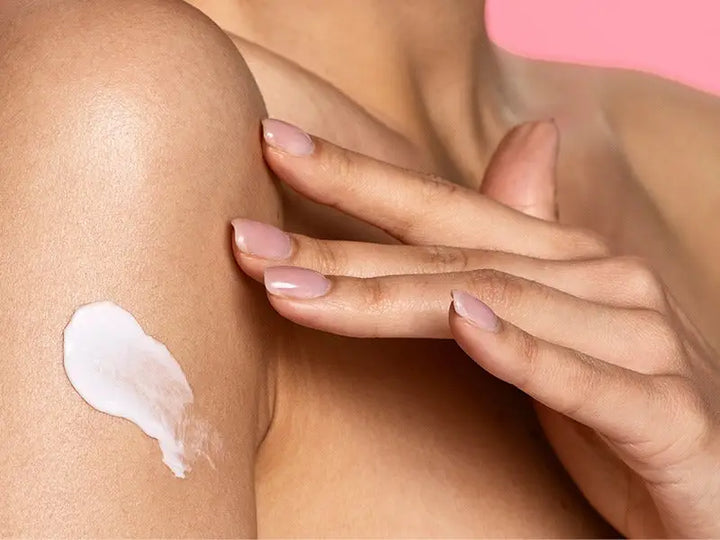Recognizing the Signs of Burnout
In a world that often demands constant performance and productivity, it's easy to find yourself feeling overwhelmed and on the brink of burnout. Recognizing the signs of burnout is crucial in order to take the necessary steps to prevent its detrimental effects on mental and physical well-being. From feeling chronically exhausted, to experiencing a decrease in productivity and motivation, to frequent physical ailments such as headaches and muscle pain, the signs of burnout can manifest in various ways. It's important to not only be aware of these signs in ourselves, but also in those around us. By recognizing the signs of burnout, we can take proactive steps to manage stress and avoid reaching a point of complete exhaustion.
Identifying the Impact of Burnout on Personal and Professional Life
Burnout can have a significant impact on both personal and professional life. It can lead to mental health issues such as anxiety and depression, as well as decreased work productivity and strained relationships with colleagues and loved ones. The physical and emotional consequences of burnout can manifest as chronic fatigue, headaches, and irritability, impacting overall well-being and career satisfaction.
In terms of job performance, burnout can lead to decreased quality of work, missed deadlines, and increased absenteeism. It can also hinder career advancement and job satisfaction. In personal life, burnout can strain relationships with family and friends, leading to feelings of isolation and disconnection.
To manage and prevent burnout, individuals can prioritize self-care, set boundaries, and seek support from therapists or mentors. Employers can promote a healthy work-life balance, offer flexibility, and encourage open communication about workplace stress. Incorporating self-care practices, such as using beauty products during bath time, can help to relieve stress and prevent burnout in both personal and professional settings. Overall, awareness and proactive measures are crucial for addressing the impact of burnout on mental health, work performance, and relationships.

Understanding the Physical and Emotional Symptoms of Burnout
Burnout can manifest itself through a variety of physical and emotional symptoms. Physically, you may experience fatigue, headaches, stomach issues, and muscle pain, as well as changes in your sleep patterns and appetite. Emotionally, you may feel a sense of detachment, cynicism, and irritability, as well as a lack of motivation and a decreased sense of accomplishment. You may also notice a decline in your performance and productivity, as well as an increased sense of cynicism and negativity.
It's important to pay attention to the duration, frequency, and intensity of these negative feelings to determine if you're experiencing true burnout. If these symptoms persist for an extended period of time, occur frequently, and have a significant impact on your daily life, it's likely that you're facing burnout.
When identifying burnout symptoms, focus on your body, mood, and habits. Take note of any physical discomfort or changes, as well as your emotional state and behavior patterns. It's also important to be aware of any changes in your productivity and performance. Finally, seek out support and help from professionals if you believe you may be experiencing burnout. Using beauty products during times such as a bath can be a helpful way to relieve stress and take care of your mental health.
What Are the Stages of Burnout?
The stages of burnout can surface gradually and it's important to recognize them in order to effectively recover. The first stage often begins with feelings of fatigue and disengagement. At this point, individuals may start to notice a decline in their overall motivation and energy levels. The second stage typically involves increased cynicism and detachment, as well as a noticeable decline in productivity. Finally, the third stage is marked by a sense of hopelessness, emotional exhaustion, and a significant decrease in overall performance.
To recover from burnout, it's crucial to acknowledge the problem and identify the stressors contributing to it. This may involve prioritizing self-care, setting boundaries, and seeking support from friends, family, or a mental health professional. Engaging in activities that promote relaxation, such as enjoying a bath time with soothing beauty products, can also be helpful in relieving stress and promoting recovery. In more severe cases, taking a break from work or seeking professional help may be necessary. Ultimately, recognizing burnout, addressing its underlying causes, and seeking support are essential steps in the recovery process.
How Long Does Burnout Last?
Burnout recovery time varies depending on personal resilience, job nature, and lifestyle. Short-term stress may be alleviated within a few months, but severe burnout can take more than a year to recover from. Factors such as individual resilience and coping mechanisms play a crucial role in determining the recovery period. Engaging in self-care activities can aid in the recovery process, including regular exercise, healthy eating, adequate sleep, and utilizing relaxation techniques. Additionally, incorporating beauty products into daily self-care routines, such as taking a soothing bath, can help relieve stress and promote relaxation. Overall, recognizing the signs of burnout and taking proactive steps towards self-care can contribute to a more efficient recovery process.
The Recovery Process: Steps to Overcoming Burnout
Overcoming burnout requires taking immediate action and prioritizing wellbeing to support the recovery process. The first step is acknowledging the burnout and its impact on physical and mental health. It's important to take immediate action by setting boundaries, delegating tasks, and taking time off if possible. Prioritizing wellbeing involves engaging in self-care activities such as exercise, adequate sleep, and healthy eating. It's also essential to seek support from friends, family, or a professional therapist.
Tackling recovery one step at a time involves setting realistic goals and breaking down tasks to manageable chunks. It's important to practice mindfulness and engage in activities that bring joy and relaxation, such as taking a bath with soothing beauty products, or engaging in a hobby.
Addressing burnout is crucial to prevent long-term negative effects on physical and mental health. Supporting recovery involves creating a supportive environment at work and at home, and encouraging open communication about stress and burnout. By prioritizing wellbeing, taking immediate action, and tackling recovery one step at a time, individuals can overcome burnout and regain a sense of balance and fulfillment in their lives.
1. Acknowledge and Accept
When it comes to burnout, it's important to acknowledge and accept the signs before they worsen. Some key signs to look out for include chronic fatigue, decreased productivity, and a lack of motivation and interest in work or other activities. Additionally, irritability, difficulty concentrating, and physical symptoms like headaches or stomach issues can all indicate burnout.
It's crucial to seek support from others and take action to address burnout before it takes a greater toll. This may involve reaching out to a trusted colleague or professional for guidance, as well as making changes to how I approach my work and manage stress. Additionally, finding time for self-care and relaxation, like using different beauty products during my bath time to relieve stress, can also play a significant role in addressing burnout. Taking these steps can help me regain a sense of balance and prevent burnout from worsening.
2. Create Structure
Creating structure in your day is crucial for restoring energy and preventing burnout. Start by identifying what drains your energy, such as stress at work, perfectionism, or difficulty setting boundaries. Once you've pinpointed the causes of your burnout, focus on finding activities to address and relieve these stressors.
One effective way to restore energy is to incorporate relaxing activities into your day. Take a bath to unwind and use different beauty products to pamper yourself. Utilize this time to release the tension and stress that has built up throughout the day.
Consider making necessary changes in your lifestyle or job to achieve mental and physical health. This might involve setting boundaries at work, reassessing priorities, or even finding a new job that aligns better with your needs and values. Striking a balance between work and personal life is also crucial for preventing burnout.
By creating a clear structure for your day and focusing on activities that restore energy, you can address the root causes of burnout and make positive changes to achieve a healthier, more balanced lifestyle.
3. Put Solutions in Place
1. Prioritize: Make a list of your tasks and responsibilities, then prioritize them based on their importance and urgency. Focus on completing the most essential tasks first, and let go of the ones that are less crucial.
2. Delegate: If possible, delegate some of your tasks to others. Whether it's at work or at home, sharing the responsibilities can help reduce your workload and give you more time to focus on activities that bring you joy.
3. Remove unnecessary obligations: Identify any commitments or activities that drain your energy without providing any real benefit. It could be a volunteer role, social event, or even a household chore that isn't essential. Remove or reduce these obligations from your calendar to free up more time for energizing activities.
4. Limit exposure to draining activities: Whether it's spending time with negative people, engaging in toxic behaviors, or consuming negative media, limit your exposure to things that drain your energy and leave you feeling depleted.
5. Fill your calendar with joyous activities: After clearing the clutter and identifying draining activities, fill your calendar with things that bring you joy and energy. This could include spending time with loved ones, pursuing a hobby, taking a bath with soothing beauty products, or engaging in self-care practices. Prioritize these activities and make them a regular part of your routine to counterbalance any draining obligations.
How to overcome burnout: ways to support your recovery
1. Create a self-care routine
One way to support your recovery from burnout is by creating a self-care routine that includes using beauty products. This can be something as simple as setting aside time each day to focus on your skincare or incorporating a weekly pamper session with a face mask or body scrub. By dedicating time to prioritize your well-being, you can help to reduce stress and promote relaxation.
2. Take a soothing bath
Taking a bath can be a therapeutic way to unwind and de-stress after a long day. Adding calming essential oils, bath bombs, or bath salts can enhance the experience and promote relaxation. Utilizing beauty products in the bath can provide a much-needed mental and physical break from the demands of everyday life.
3. Practice mindfulness with skincare
Incorporating mindfulness into your skincare routine can help to alleviate burnout. Taking the time to focus on the sensations and rituals of applying skincare products can provide a moment of calm in an otherwise hectic day. By incorporating beauty products into a mindfulness practice, you can promote a sense of relaxation and rejuvenation.
Overall, incorporating beauty products and self-care rituals into your daily routine can be an effective way to support your recovery from burnout. These practices allow you to prioritize self-care and provide moments of relaxation and rejuvenation in the midst of a busy life.
4. Do things that you enjoy
Incorporating activities like spending time with loved ones, engaging in hobbies, and indulging in self-care rituals can bring joy and provide a much-needed break from the daily stresses of life. Taking a walk in nature, reading a good book, or pampering yourself with a bath and different beauty products can help relieve mental exhaustion and re-center your mind.
It is essential to make a commitment to prioritize these joy-bringing activities regularly, even when feeling mentally drained. By doing so, you can reconnect with yourself and alleviate stress, ultimately leading to a healthier mental state. Even after starting to feel more like yourself, it's important to keep up these habits to maintain a balanced and joyful life.
So, don't underestimate the power of self-care and activities that bring you joy. Incorporating these into your routine can help you prioritize your mental well-being and find moments of peace and happiness amidst the chaos of daily life.
5. Create a healthy sleep schedule
Creating a healthy sleep schedule is essential for overall well-being and productivity. To start, it's important to set a regular bedtime and wake time, even on weekends, to regulate your body's internal clock. Creating a relaxing bedtime routine can help signal to your body that it's time to wind down. This can include activities like taking a warm bath, reading a book, or practicing relaxation exercises. It's also important to avoid stimulants such as caffeine and electronic devices before bed, as they can disrupt your sleep.
Using a sleep tracker can be beneficial in monitoring and improving sleep quality. These devices can provide valuable insights into your sleep patterns and help identify any disruptions or issues that may be affecting your sleep. By tracking your sleep, you can make necessary adjustments to your routine and environment to promote better sleep quality.
By incorporating these steps, you can establish a healthy sleep schedule that will leave you feeling refreshed and rejuvenated each day. Prioritizing sleep and creating a peaceful bedtime routine are key components in maintaining overall health and well-being.
6. Create a work-life balance
Work-life balance is crucial for overall well-being and productivity. It is essential to find time for both work and personal life, and small daily actions can contribute to achieving this balance. Taking breaks, enjoying hobbies, and using beauty products during bath time can help people relieve stress and rejuvenate.
Time blocking is another effective strategy to create a work-life balance. By allocating specific blocks of time for work, personal activities, and relaxation, individuals can ensure they have time for both work and personal life.
Reducing workload is important for maintaining a healthy work-life balance. Overworking can lead to burnout and decreased productivity. By delegating tasks, prioritizing efficiently, and setting boundaries, individuals can reduce their workload and improve their well-being.
Taking vacation days for quality time with family and friends is also important. Quality time with loved ones can help reduce stress and provide a much-needed break from work.
Overall, creating a work-life balance through small daily actions, time blocking, reducing workload, and maintaining a healthy sleep schedule is essential for overall well-being and productivity.
7. Remember what makes you happy
Remember what makes you happy and make time for those activities every week. Whether it's taking long walks with your best friend, bringing your child to the park, or simply reading a book in the bathtub, these joyful activities are essential for self-care. In today's busy world, it's easy to get caught up in the hustle and bustle of daily life, but it's important to make time for the things that bring you joy.
Taking a bath can also be a great opportunity to not only relax and unwind but also to pamper yourself with different beauty products. Using bath bombs, scented oils, or a luxurious bubble bath can provide a sense of relief from stress and help you feel rejuvenated.
Making these activities a habit, even after you start feeling more like yourself, is crucial for maintaining your mental and emotional well-being. So, prioritize the time for these activities, and remember that taking care of yourself is just as important as taking care of others. Practicing self-care through joyful activities will not only help you feel better but will also positively impact those around you.
8. Focus on nutrition and stay hydrated
Incorporating a focus on nutrition and staying hydrated is a key factor in maintaining overall health and managing stress. It is important to plan balanced meals that include a variety of fruits, vegetables, and whole foods to provide essential nutrients for the body. Keeping a water bottle nearby serves as a reminder to drink regularly and stay hydrated throughout the day.
Mindful eating is another crucial aspect of maintaining a healthy relationship with food and reducing stress. By practicing mindful eating, individuals can become more aware of their eating habits, enjoy their food more, and make healthier choices. This can have a positive impact on stress levels and overall well-being.
Staying hydrated is crucial for physical health and cognitive function. Adequate water intake is essential for maintaining bodily functions, preventing dehydration, and supporting mental clarity and focus.
By focusing on nutrition and staying hydrated, individuals can support their overall health, manage stress more effectively, and improve their relationship with food. It is essential to prioritize these habits as part of a holistic approach to wellness.
9. Practice mindfulness
Finding moments for mindfulness in our daily routines can greatly reduce feelings of stress and anxiety. Whether it's taking a bath, doing your skincare routine, or simply taking a few minutes to yourself, these can all be opportunities for practicing mindfulness.
Engage in mindful breathing exercises to bring your focus to the present moment and reduce any feelings of stress. Take a few moments to simply breathe and be aware of the sensations in your body. Another way to incorporate mindfulness is to practice mindful walking, being fully present and attentive to each step.
If you're new to mindfulness, you can start with the Mindfulness for Beginners series with Jeff Warren. This can help you learn and incorporate mindfulness practices into your daily routine, ultimately leading to a more peace-oriented lifestyle.
By incorporating these simple activities into your day, you can cultivate a more mindful and stress-free way of living. Whether it's taking a few deep breaths before applying your favorite beauty products, or being fully present during bath time, these moments can serve as opportunities for mindfulness and stress relief.
Conclusion
In conclusion, the key takeaways from the previous sections highlight the importance of self-care and the use of beauty products as a means of relieving stress. The main points discussed in the report include the various beauty products that can be utilized during bath time to promote relaxation and overall well-being. Additionally, the report emphasizes the significance of taking time for oneself and incorporating beauty routines into daily life.
The findings of the report underscore the positive impact that beauty products can have on reducing stress levels and improving mental health. Furthermore, it is evident that incorporating beauty products into self-care routines can enhance one's overall quality of life.
In summary, the use of beauty products during bath time can serve as a valuable tool for stress relief and relaxation. The importance of this topic lies in the potential for individuals to improve their mental and emotional well-being by incorporating these products into their self-care routines. It is crucial for individuals to prioritize self-care and acknowledge the significance of utilizing beauty products as a means of promoting wellness.



















